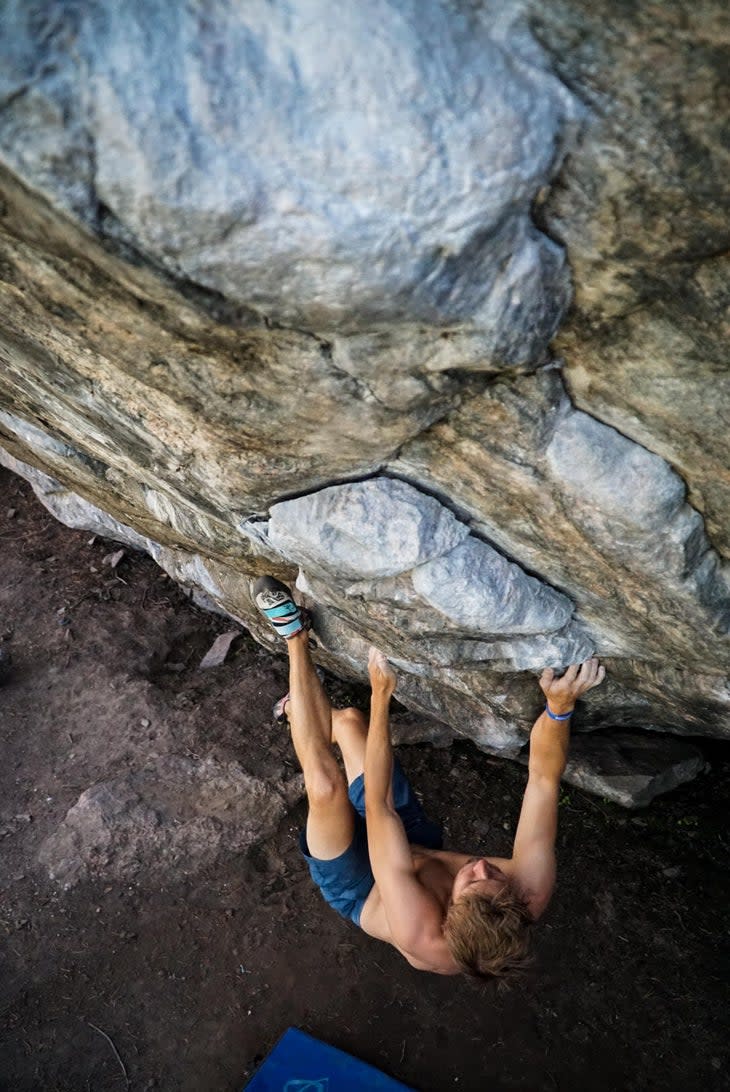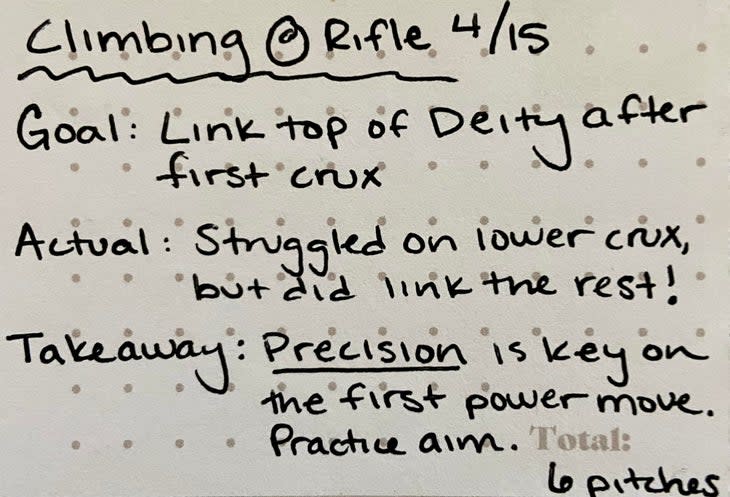Use Climbing Cool-Down to Maximize Memory
This article originally appeared on Climbing
Picture this: You spent your whole afternoon dialing in the beta on your project. You're close, but the crux hangs on one precise move. If you misplace your toe by a centimeter, you'll never make the reach. At the end of the day, you finally know what to do and how to do it. You're just too cooked to put it into practice.
By morning, it's a different story. You've recouped enough energy, but the memory of that crucial sequence has faded. Two goes later, you finally remember ... but have nothing left in the tank.
Successful sending often comes down to conserving precious time and energy. Memory plays a surprising role in that process, from ingraining beta to expanding your comfort zone.
Recency Effect
The Recency Effect is our mental tendency to latch onto what we have done or experienced most recently. It bookends the Primacy Effect, the equal and opposite tendency to remember the first thing we started with. The psychologist Herman Ebbinghaus initially discovered these neurological habits back in the late 19th century as part of his research on serial position, or how order of events impacts the absorption and retention of information.
To put this in perspective, think of the brain as a pipe. Whatever we dump in first and tack on last we can easily access from the open ends. It's everything in the middle that can get trapped.

The issue here for our purposes is that the bulk of training takes place in the middle. Our most fruitful efforts, such as progress on a route or bouldering project, usually nestle somewhere deep between the first climb and the last. It's obviously unwise to dive into your project the moment your shoes go on, and unrealistic to time each session so that your last go is also your very best. It's hard to tell in one moment exactly how we'll perform in the next. So many factors play into the quality of each performance; energy, focus, and enthusiasm all interact to form what we bring to the table.
So, how do we hold onto the meat of the work by the time we're wrapping things up?
Climbing Magazine is now 50% off for a limited time. Just $24 a year gets you five print issues (four Climbing, one Ascent) delivered to your door. Subscribers also receive unlimited access to over 5,000 articles on climbing.com.
The answer is another deceptively simple one: Include a proper cool-down that capitalizes on the Recency Effect. Tailor your cool-down to take advantage of it with these three steps.
Zone In
Consider the theme that characterized your climbing today. Did you have an intention going into the session? What was the main skill you concentrated on? What aspects gave you the most trouble? Where did you make the most progress? The answers to any of those questions will help you dig down to the roots of how you spent your time.
Then, narrow it down. Which of those elements best contributed to your growth as a climber?
The facet that holds the most value for you may or may not match your original intentions. If you went into the session with the goal of finally deciphering the final crux on your project, but ended up finding a more efficient way to tackle the lower section instead, then those moves deserve prime real estate in your brain so that you can execute them easily next time and save energy for the tricky top. The highlight of your day might even look like a mistake instead of an objective success, like an unexpected whipper that helped ameliorate a fear of falling. There are no wrong answers.
Once you settle on the "it" factor, practice it during your cool-down to hammer in what you want to remember most.
Back Off
That doesn't mean you'll spend your last few minutes continuing to push the envelope. You already did the hard work, now you're just making it stick. Plus, technique deteriorates as fatigue builds. The last thing you want to do here is flail at the finish, because that might supply your brain with engrams of poor execution. Go out with a bang by reining yourself in.
Take things down a notch and dial in your skill of choice in a way that doesn't pump you to oblivion. This course of action could look like rehearsing the same movements on an easier climb with similar features; breaking down a long sequence into individual moves separated by rests, so that you can recover well enough to style each of them; or slowing down to ensure fluidity of motion.
Write It Down

As soon as you finish, write down your biggest takeaway. We're talking about an old-fashioned, pen-to-paper, handwritten note--preferably in a designated training journal that contains all of your intentions and reflections. Not only will you capture the important details while they're still fresh in your mind, research shows that physically jotting something down, compared to typing it out, helps cement the memory. Instead of pulling out your phone, put your fingers through one final workout by writing out your accomplishments down to the exact what, why, and how.
The right kind of cool-down can make all the difference in what you retain from one session to the next. Make friends with your working memory to get more out of each moment.
Lucie Hanes of Eagle, Colorado, is a climber, ultrarunner, and sports-psychology consultant with Inside Out Athlete.
For exclusive access to all of our fitness, gear, adventure, and travel stories, plus discounts on trips, events, and gear, sign up for Outside+ today.

